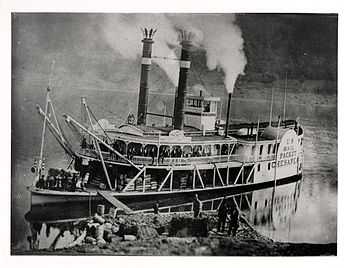Mail steamer

Mail steamers were steamships which carried the mail across waterways, such as across an ocean or between islands, primarily during the 19th Century and early 20th Century, when the cost of sending a letter was declining to the point an ordinary person could afford the cost of sending a letter across great distances.
The advantage of carrying mail
In addition to carrying mail, most mail steamers carried passengers or cargo since the revenue from the mail service, if any, was insufficient by itself to pay for the cost of its travel.
However, the advantage for a steamship carrying mail was that its arrival would be advertised in advance in the newspapers, thus giving it "free advertising" as a travel option for passengers or cargo.
Universal Postal Union regulations
Mail carried by these steamers -- sometimes known as paquebot mail -- was subject to various regulations by the governments involved as well as the Universal Postal Union's (UPU) regulations stated at the UPU Vienna Conference of 1891.
Delivery of the mail
In most cases, mail carried by mail steamers was delivered to the post office to which it was addressed. In some cases, the incoming mail would be advertised in the local newspaper for pickup at the post office or at the steamship's office for a fee, if not already fee-paid.
Local delivery service
Occasionally, because of political instability when a post office could not provide normal services, incoming mail from a mail steamer would be delivered to a local delivery service, which would deliver the mail and charge the addressee an extra fee for the service.
When this occurred, the local delivery service would place its own local service stamp or mark on the envelope when the extra fee was paid.
See also
- Allan Line Royal Mail Steamers
- Postal history
- Royal Mail Ship
- Pony Express
- TPO and Seapost Society for all collectors of Rail and Ship Mail worldwide